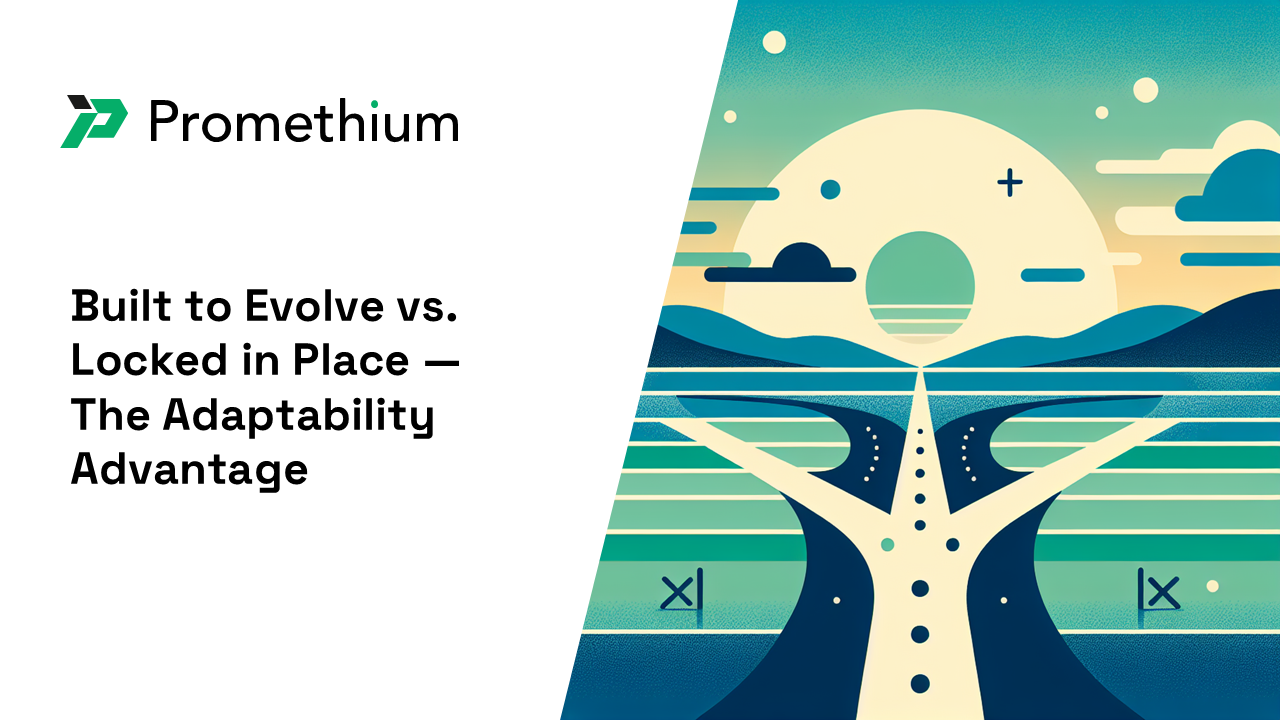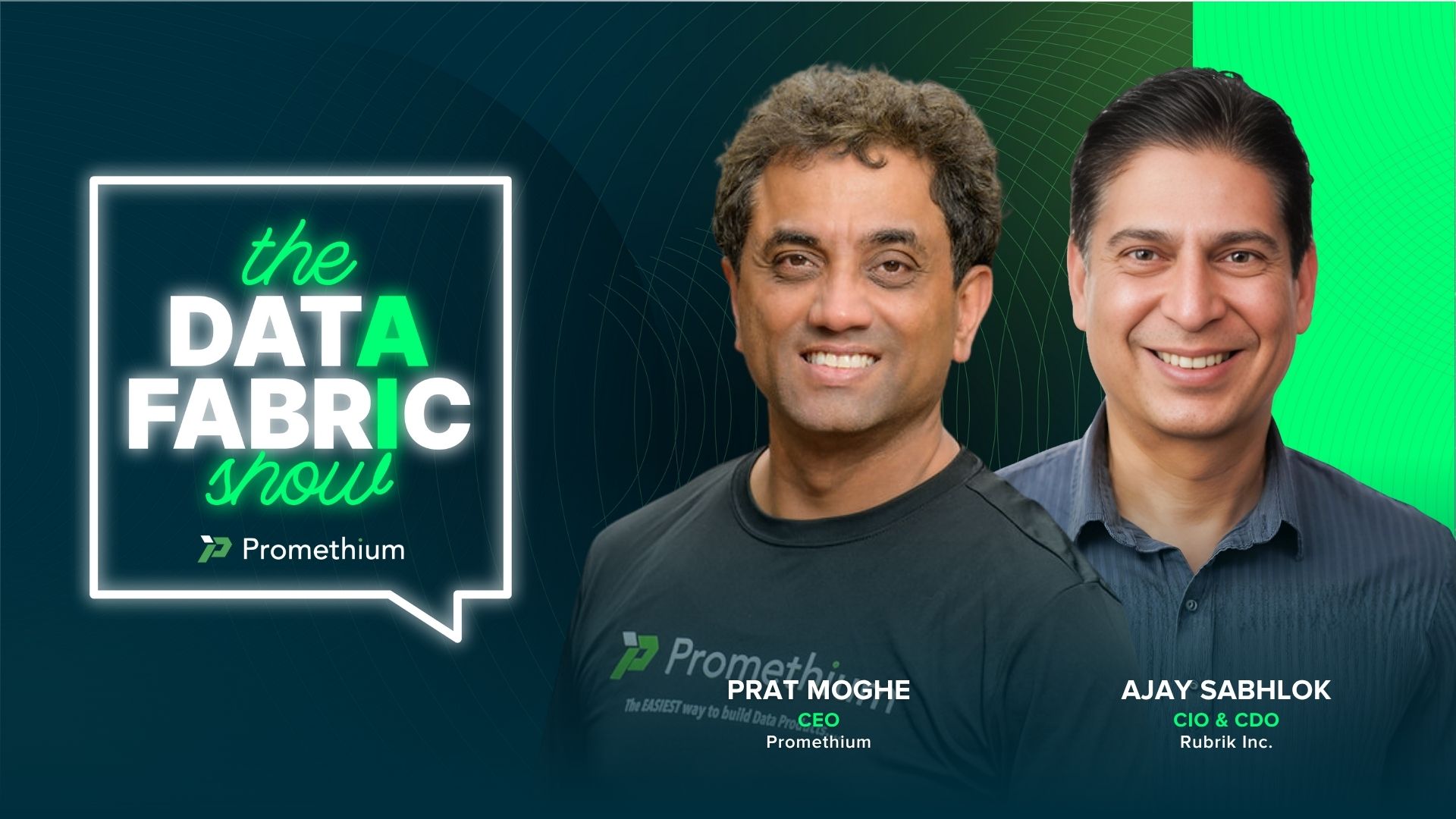In Parts 1 and 2, we explored the fundamental choice between open and closed data fabric architectures, and examined the hidden costs of Microsoft Fabric’s migration requirements. Now comes the crucial question: Which approach positions your organization for the AI future that’s rapidly evolving around us?
The answer isn’t just about avoiding migration costs or preserving current investments — it’s about building a foundation that can adapt, evolve, and capitalize on opportunities we can’t yet imagine.
Microsoft Fabric locks you into a single vendor’s vision of the future. Promethium keeps your options open while enabling immediate AI capabilities. In a landscape where competitive advantage comes from speed and adaptability, that difference matters more than ever.
Want to see Promethium Mantra in action? Join our upcoming live demo on Thu, Sep 25. Click here to register.
Why the AI Landscape Demands Adaptability
The AI revolution is accelerating at an unprecedented pace, creating both opportunities and uncertainties that make architectural flexibility essential:
New AI models emerge monthly. GPT, Claude, Gemini, open-source alternatives — each brings different capabilities and cost structures. Organizations that can quickly evaluate and adopt the best model for each use case gain significant advantages.
AI tooling is rapidly evolving. From vector databases to agent frameworks, from fine-tuning platforms to specialized AI infrastructure — the tools that define AI excellence are changing quarterly, not yearly.
Business requirements are shifting in real-time. What started as customer service chatbots now requires real-time data analysis. What began as marketing optimization now demands supply chain intelligence. AI use cases evolve faster than traditional IT planning cycles.
Regulatory landscapes are emerging. AI governance, data sovereignty, and algorithmic transparency requirements vary by region and industry — and they’re changing as governments catch up to technology.
In this environment, the most dangerous choice is the one that limits your future options. Architectural decisions made today will determine what’s possible for your organization over the next decade.
How Open Architectures Enable Evolution
Open data fabric architectures like Promethium are designed for adaptability from the ground up:
Data Source Adaptability
Today: Connect to any data source — cloud warehouses, SaaS platforms, on-premise systems.
Tomorrow: Instantly integrate new data sources as business acquisitions, partnerships, or technology adoption creates new requirements.
Platform-locked alternative: Must migrate all data to OneLake before it can be used, creating delays and barriers to new integrations.
Cloud Flexibility
Today: Deploy across AWS, Azure, GCP, or hybrid environments based on performance, cost, or regulatory needs.
Tomorrow: Leverage new cloud capabilities, edge computing, or specialized AI infrastructure as business requirements evolve.
Platform-locked alternative: Azure-only deployment limits optimization opportunities and regulatory compliance options.
Tool Independence
Today: Enhance existing BI tools (Tableau, Looker, Power BI) while adding AI capabilities and use cases.
Tomorrow: Adopt new agentic frameworks, analytics platforms, specialized AI tools, or industry-specific solutions without architectural constraints.
Platform-locked alternative: Forced to use Power BI and Microsoft tools, even when better solutions exist for specific use cases.
AI Model Freedom
Today: Deploy any LLM or agent framework — OpenAI, Anthropic, open-source models, or custom solutions.
Tomorrow: Quickly adopt breakthrough models as they emerge, or shift between models based on cost, performance, or regulatory requirements.
Platform-locked alternative: Constrained to Microsoft’s AI roadmap and Copilot capabilities, missing opportunities from specialized or emerging AI providers. The uncertainty around OpenAI’s partnership with Microsoft creates additional risk — what happens if that relationship changes, or if OpenAI’s best models become available elsewhere first? Organizations using open architectures can work with any AI provider, while platform-locked users are subject to vendor partnership dynamics beyond their control.
How Closed Architectures Create Constraints
Platform lock-in isn’t just about vendor dependency — it’s about losing the ability to adapt to changing circumstances:
Innovation Bottlenecks
Microsoft Fabric innovations arrive on Microsoft’s timeline, not yours. If they don’t prioritize capabilities your industry needs, you wait. If breakthrough AI tools emerge outside their ecosystem, you miss them.
Real example: When Anthropic’s Claude showed superior performance for code analysis, organizations using open architectures could adopt it immediately. Fabric users had to wait for Microsoft’s integration roadmap.
Cost Optimization Limits
Platform lock-in eliminates pricing leverage. When switching costs become prohibitive, vendors have less incentive to offer competitive pricing or terms.
Real example: Organizations locked into Fabric pay OneLake storage costs even when cheaper, better-performing alternatives exist for specific workloads.
The Future-Proof Advantage in Practice
Consider how architectural choices affect real business scenarios:
Scenario 1: Acquisition Integration
Challenge: Company acquisition brings new data systems that must be integrated for unified analytics.
Open Architecture Response: Connect new systems immediately with zero-copy federation, enabling instant cross-company insights.
Platform-Locked Response: Plan multi-month migration to OneLake before acquired company’s data can be used in unified analysis.
Scenario 2: Cost Optimization
Challenge: Need to optimize costs by moving specific workloads to more efficient platforms.
Open Architecture Response: Shift workloads to optimal platforms while maintaining unified data access and governance.
Platform-Locked Response: Constrained by OneLake requirements, missing opportunities for workload-specific optimization.
The Strategic Choice: Adaptability vs. Dependency
Your data architecture choice is really a choice about how you want to compete:
Future-Proof Strategy (Open):
- Adaptive advantage: Quickly adopt new capabilities as they emerge
- Vendor leverage: Maintain negotiating power and cost optimization opportunities
- Innovation speed: Experiment with cutting-edge tools without architectural constraints
- Strategic flexibility: Evolve business models without technology limitations
Platform-Locked Strategy (Closed):
- Integration benefits: Deep tool integration within single vendor ecosystem
- Simplified decisions: Reduced complexity in vendor management and tool selection
- Predictable roadmap: Clear path within Microsoft’s technology evolution
- Unified support: Single vendor relationship for comprehensive platform support
For most enterprises in competitive markets, the choice is clear. In rapidly evolving landscapes, adaptability beats integration.
Building Your Future-Proof Foundation
The question isn’t whether change will accelerate — it’s whether you’ll be ready to capitalize on it.
Organizations choosing open data fabric architectures position themselves to:
- Adopt breakthrough AI capabilities immediately rather than waiting for vendor integration
- Optimize costs continuously by leveraging best-of-breed solutions for specific workloads
- Compete on innovation rather than being limited by platform capabilities
Those choosing closed architectures trade future flexibility for present integration — a bargain that looks increasingly expensive as change accelerates.
The AI era rewards the adaptable. Your data architecture choice determines whether you’ll be leading innovation or waiting for permission to adopt it.
Choose future-proof. Choose open. Choose the architecture that grows with your ambitions, not one that constrains them.
Ready to build a future-proof data foundation? See how Promethium delivers immediate AI capabilities while preserving unlimited flexibility.




